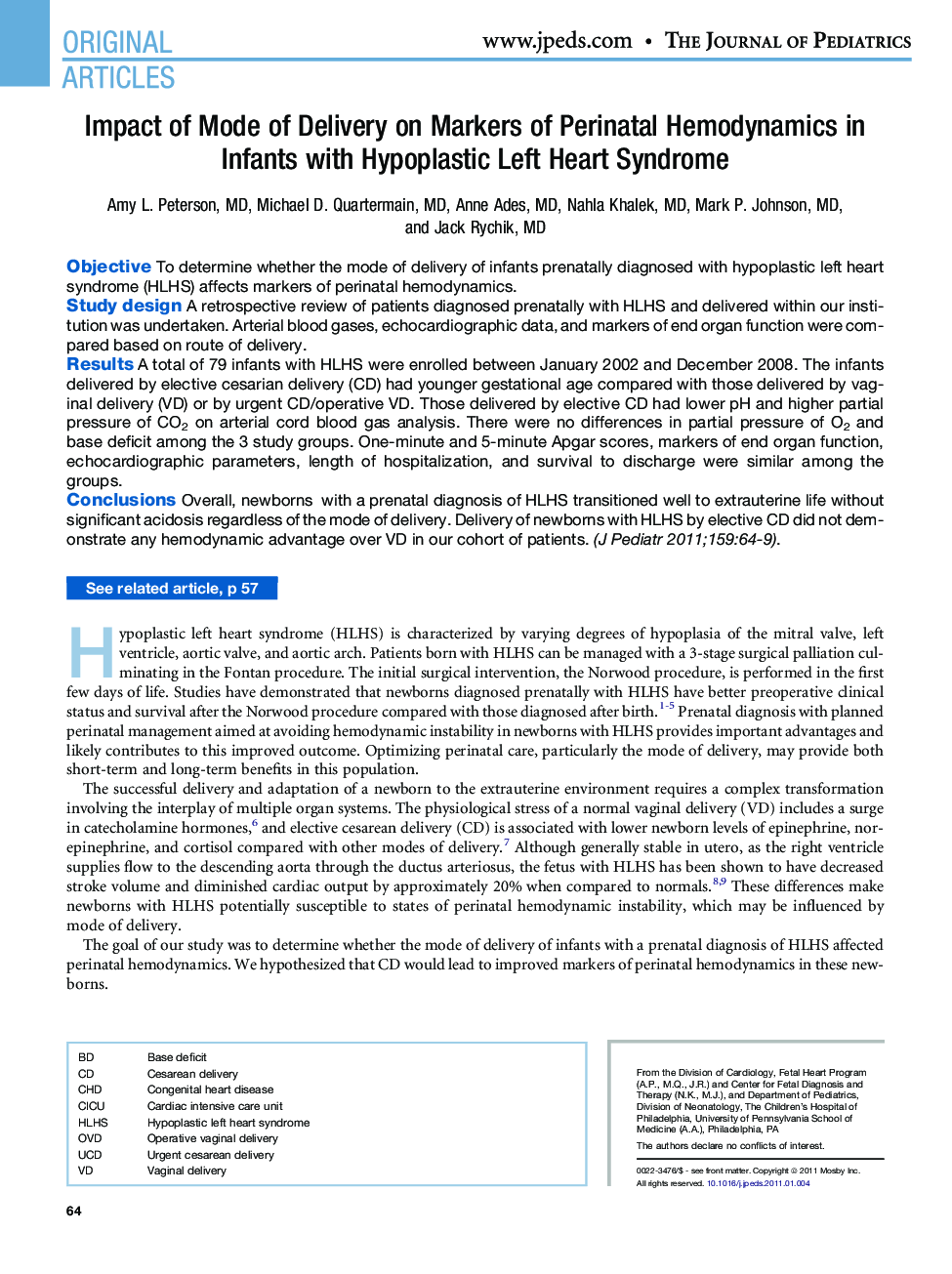| Article ID | Journal | Published Year | Pages | File Type |
|---|---|---|---|---|
| 6225430 | The Journal of Pediatrics | 2011 | 6 Pages |
ObjectiveTo determine whether the mode of delivery of infants prenatally diagnosed with hypoplastic left heart syndrome (HLHS) affects markers of perinatal hemodynamics.Study designA retrospective review of patients diagnosed prenatally with HLHS and delivered within our institution was undertaken. Arterial blood gases, echocardiographic data, and markers of end organ function were compared based on route of delivery.ResultsA total of 79 infants with HLHS were enrolled between January 2002 and December 2008. The infants delivered by elective cesarian delivery (CD) had younger gestational age compared with those delivered by vaginal delivery (VD) or by urgent CD/operative VD. Those delivered by elective CD had lower pH and higher partial pressure of CO2 on arterial cord blood gas analysis. There were no differences in partial pressure of O2 and base deficit among the 3 study groups. One-minute and 5-minute Apgar scores, markers of end organ function, echocardiographic parameters, length of hospitalization, and survival to discharge were similar among the groups.ConclusionsOverall, newborns with a prenatal diagnosis of HLHS transitioned well to extrauterine life without significant acidosis regardless of the mode of delivery. Delivery of newborns with HLHS by elective CD did not demonstrate any hemodynamic advantage over VD in our cohort of patients.
